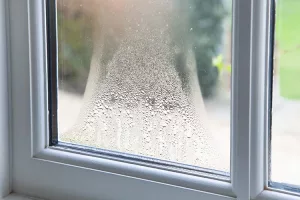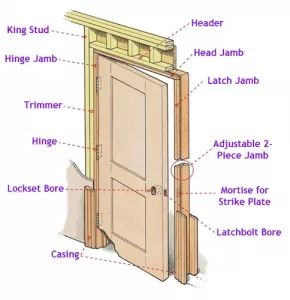How to Prepare for New Window Replacement

Did you know that a new window replacement can get you tax credits? According to the Bipartisan Act, energy-efficient windows can get you tax credits worth $200.
New windows do not only increase energy efficiency but also increase the value of your home. However, they are a significant investment that can cause a dent in your pocket. The installation process in itself is pretty messy requires a lot of preparation.
If this is the first time you are replacing your windows, here’s how you can prepare your home. It can prevent mishaps and reduce the cleanup time. You need to keep an eye on several more things to ensure smooth work, which we have included below. This article walks you through everything you need to know about how to prepare for a new window replacement and what to look for to ensure the window is properly installed.
How Do I Prepare My House for Replacement Windows?
Windows installation process is a messy one, to say the least. However, it doesn’t take long to complete; a day or two at the max. You can speed up the process by preparing your home prior to the installation day. Here are few tips you need to follow to make the installation a quick and efficient one:
Make Way for Window Installers
When installing, the installers will need access to areas around the windows, both inside and outside. Ensure that nothing hinders their access. Furthermore, windows are heavy, especially the oversized ones. For an efficient job, remove things in their path, especially the stairs. You need not clear everything; move the furniture and area rugs for easy access.
Also, clear your lawn furniture, lawn decorations, and plants. You do not want them trampled in the process. Additionally, you also need to clear anything hindering access to the exteriors. Trim bushes and move the plants that are blocking the path. The installation crew needs at least 2 ft of free space to work with their tools. Heavy ones like bay windows require much more space than usual. If replacing upstairs windows, the installers will use ladders or scaffolding for access.
Finally, turn off the alarm systems in your home for the duration of the replacement.
Remove Wall Decorations and Window Treatments
Remove window treatments such as blinds, curtains, and drapes. If they are in good condition, you can also use them later on. Also, ensure that you remove anything fragile from the room. For example, remove any floating shelves, wall hangings, and paintings in the vicinity of the windows being replaced for the time being. A better approach would be to remove all the wall decorations from the room to minimize damage and dust.
Moreover, you may also have to remove interior shutters and hardware. However, it’s best to talk to the crew about hardware and remove those that aren’t needed. You do not want the crew wasting precious time on those that could be done early.
Protect Your Floor and Belongings
Installing windows and doors is dirty work. To protect your home from dust and dirt, the installation crew will put down drop cloths. They also do neat work to minimize the ensuing mess. However, these are not enough considering the dust. It is safer to take your steps to protect the furniture. Cover them with sheets or tarps to prevent them from getting dirty. You can also do the same with your floor.
An alternate solution is to rent a storage space or a portable storage bin. They come in various sizes. You can rent one to store your belongings during the installation process. This way, you can keep them in one location away from all the mess and mishaps.
Prepare a Separate Workspace for Installers
Set up a separate workspace for the installation crew. They will need space to set the windows and an electrical outlet to plug in their tools. Furthermore, it should be away from kids and pets. Ensure that your pets are locked away in a room for the duration of the work. Likewise, keep your kids away to ensure their safety and that of the crew.
What Should I Look for After Installing a Window?
The window replacement process doesn’t come cheap. However, considering the protection and the energy efficiency, it is worth every penny spent. But how do you know that they are installed in the right way? Here are a few things you have to look at to ensure proper installation.

- Messy Caulking: Caulking is the first level of protection against outside elements. Since it takes up to a month to settle, you may want to revisit it in a month to check for gaps.
- Stains on the glass: The various chemicals including glues used in the installation process can leave stains on the glass. However, the window installers should have removed it before completion.
- Gaps: Look for gaps between the frame and the sill. You can spot gaps right away. This is a result of improper measurements or the frame being too large for the glass.
- Water damage: When a window isn’t installed right, it can let in the rain. In due course, you will start to see water damage in the adjacent walls.
- Drafty windows: New windows should not let in drafts or breeze of any kind. The minute you find the drafts, call the installation company right away. You are already facing a losing battle with energy bills.
- Foggy panes: Foggy panes are an indication of a bad seal. This means that the seal that keeps the gas inside the panes has been compromised.
- Not in working order: A window that doesn’t open or close isn’t worth the money you invested. Again it is a troubling sign of improper installation.
Any issues, as mentioned earlier, can result in expensive repairs and damage to the structures close by, not to mention the high energy bills.
How Long Does It Take to Install New Windows?
Considering everything is in perfect order, it should take about 30 minutes to install a window. However, if your windows are on the second floor or higher, it will take longer. The same goes for custom windows, water damage, and waterproofing work. They can hinder progress and delay things.
Do You Replace a Window from the Inside or Outside?
Generally, replacement windows are installed from the outside due to the space and the comfort. However, it depends on the rough opening and the type of window. Your crew may also have to work from the inside as well. For example, in offset windows, it is easier to install from inside the home.
How Messy Is a Window Replacement?
Replacing windows is pretty much a messy process. There will be a lot of dust spread around the vicinity during installation. While the installer adds dropcloths, it cannot catch every bit of dust. Moreover, once the old windows are removed, there will be more dust from the frame.
Unless you add tarps, it is a losing game. Also, cover your furniture and other fixtures with plastic coverings to minimize the mess.
What to Expect When Replacing Windows
Whether you are upgrading or replacing broken windows, here’s what you can expect during the replacement process.

- Permits: While it does not apply to all, homes in a hurricane zone will require permits for new windows. The same goes if you are changing the modifying the walls to accommodate a bigger window.
- Schedule: Depending on the number of windows, it can take anywhere between 2-3 days. You may also want to consider the weather before scheduling the installation.
- Get your house ready. Make way for installers and remove anything you do not want to be damaged. Also, cover the furniture and fittings to protect from the debris.
- Installation: Ensure that your windows have arrived without any damage. Also, check the brand and the spec. Any issues with the above, take it to the contractor. Once the crew arrives, they will remove the old and install the new window, one at a time.
Always prepare for unforeseen circumstances. The company should communicate with you in case of any delay. Remember, any underlying issues can cost you more in time and money.
Conclusion
Planning and preparing your home ahead for a new window replacement will take time. Nonetheless, it will ensure that the process goes forward without any issues. The crew doesn’t have to waste time setting up, even though they take time to protect your belongings. It also prevents your belongings from being damaged. However, you may want to check with the company beforehand. Few prefer to do themselves to avoid liability issues.
On a final note, getting your home ready ahead of installation may take some time. But the result will be worth the effort. Not only does it help the crew, but it also reduces the risk of accidents. Before buying the windows, call the company for a free in-home consultation.
Assurance Builders was founded in 1998 with a commitment to provide our clients a personal and enjoyable home improvement experience. By offering professional workmanship and quality products, Assurance Builders has earned a reputation for excellent work and quality service. If you are in need of a window replacement in your home, contact Assurance Builders for your FREE quote today!
 A pre-hung door is a complete door package consisting of a slab door, own frame, and hinges. However, you may have to add some features later on. It is a ready-to-go, self-contained unit that can be installed in the doorway.
A pre-hung door is a complete door package consisting of a slab door, own frame, and hinges. However, you may have to add some features later on. It is a ready-to-go, self-contained unit that can be installed in the doorway. With pre-hung doors, most of the work is already done for you. You need the following tools to install the door:
With pre-hung doors, most of the work is already done for you. You need the following tools to install the door: Cost
Cost